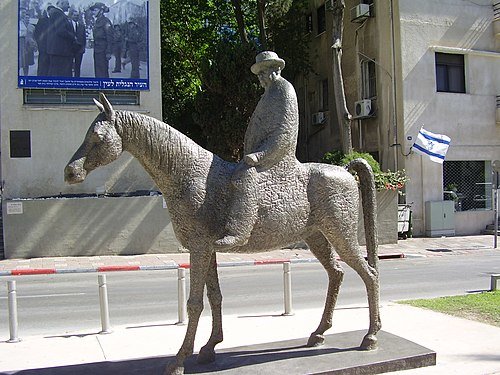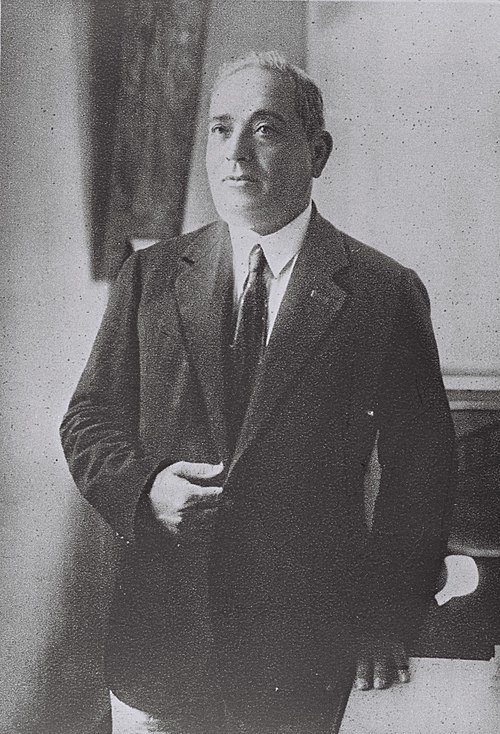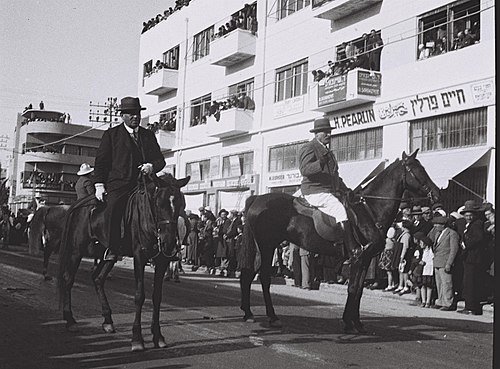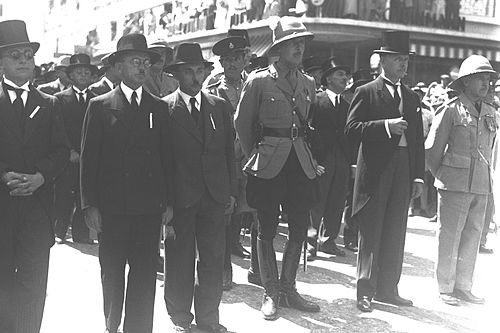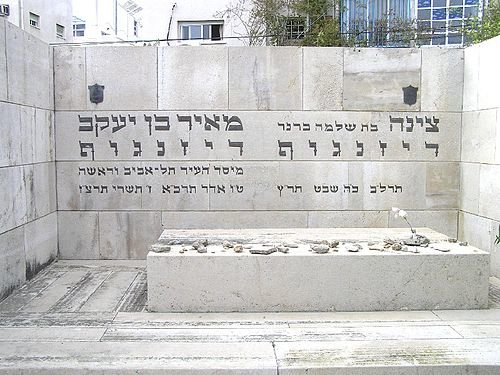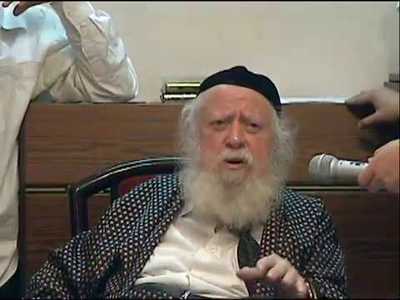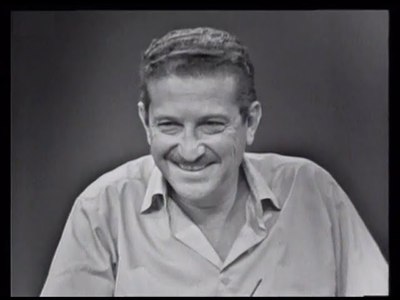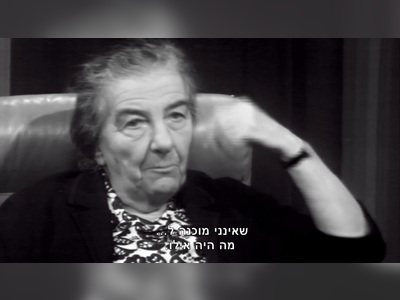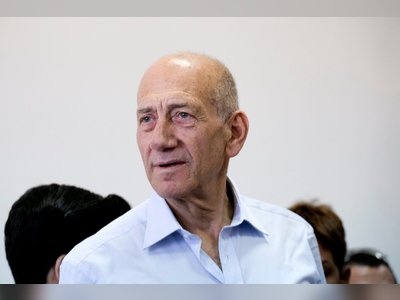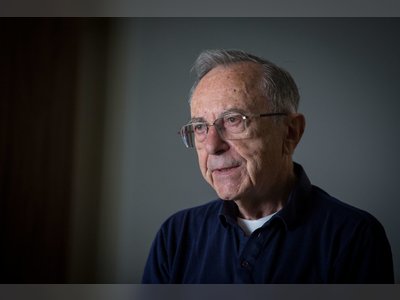מורשת גדולי האומה
בזכותם קיים
beta
Meir Dizengoff: The Founding Father of Tel Aviv
Meir Dizengoff, born on February 25, 1861, in Echimăuți, then part of the Russian Empire (present-day Moldova), and passed away on September 23, 1936, in Tel Aviv, Israel, was the first mayor of Tel Aviv, serving from 1921 to 1925 and again from 1928 until his death in 1936.
Early Life and Beginnings
Meir Dizengoff was born to Jacob and Mita in the village of Echimăuți, located in the Orhei district of Bessarabia, a region then under Russian rule (today part of Moldova). His father was a farm manager. Until the age of 15, Meir studied in a small room in his village. Later, his family moved to Kishinev, where he attended a general school. In 1882, he volunteered for the Russian army and served as a military newspaper editor in Zhytomyr. Dizengoff was the cousin of Joseph Pogis, the father of the poet Dan Pagis.
After completing his military service, Dizengoff went to Odessa and became involved in the "Narodnaya Volya" revolutionary movement. Due to his involvement, he was arrested in 1885 and spent eight months in prison. Upon his release, he joined the "Lovers of Zion" organization, founded a branch of the association in Kishinev, and was elected as a delegate to its 1887 congress.
In 1888, Dizengoff traveled to Paris to study chemical engineering at the Sorbonne. He spent three years there and specialized in glass production at the University of Lyon. During his time in France, he met Baron Rothschild, who was impressed by his talents. In 1892, he was sent to Palestine on Rothschild's mission to establish a glass bottle factory for "Baron's Wine." In 1893, he traveled to Alexandria with his partner Zina Berner, whom he had met in Zhytomyr, and married her. When the factory failed in 1894, Dizengoff returned to Odessa and established a glass factory there. During this time, he continued his involvement with the "Lovers of Zion" organization, associating with figures like Pinsker, Simon Dubnow, Chaim Nachman Bialik, and Alter Druyanov, and participating in the Fifth and Sixth Zionist Congresses. Despite being initially opposed to Herzl's Uganda Plan at the Sixth Zionist Congress, Dizengoff remained a dedicated follower of Theodor Herzl.
In 1904, he and his friend Ze'ev Gluskin founded the "Geula" company to purchase land in Palestine. In 1905, at the age of 44, Dizengoff made his second aliyah (immigration to Palestine) and settled in Jaffa. Simultaneously, he engaged in importing machinery and established a company for mechanical carts to transport passengers between Jaffa, Jerusalem, and the settlements. Each cart accommodated 12 passengers and was powered by petroleum. He also established a shipping company named after himself.
Some time after the residents organized, led by Akiva Aryeh Weiss, to establish a new Hebrew city, Dizengoff joined the establishment of "Ahuzat Bayit." In 1911, five years after the founding of the association and two years after the establishment of the neighborhood "Ahuzat Bayit" (which would be renamed "Tel Aviv" a year later), and after the core of the city was laid, Dizengoff was elected as the head of the council. He served in this role until 1922, during which Tel Aviv gained independent status separate from Jaffa. Dizengoff was then elected as the city's mayor, a position he held until his death in 1936, with a brief hiatus from 1925 to 1928. During his tenure, Tel Aviv fulfilled its destiny and grew to a city with 150,000 residents.
During World War I, many leaders of the Jewish settlement were exiled, and Dizengoff was appointed as a liaison between the exiled community and the Ottoman authorities. In this role, he provided assistance to the exiles from Tel Aviv in the Jewish settlements and earned the nickname "Rish Galuta" (Exilarch). Due to his widespread publicity about the difficult conditions of the exiles, he successfully negotiated with the authorities for the provision of organized food supplies to the exiles. Many of the exiled residents of Tel Aviv, including Dizengoff himself, settled in Haifa. In September 1918, with the completion of the British occupation of Haifa, Dizengoff met with the general in charge of the forces. The general accompanied him in his car, and together they traveled to Tel Aviv. Shortly after the return of Tel Aviv's residents to the city, the neighborhood's activity resumed, and Dizengoff was re-elected to lead it.
In 1921, Dizengoff succeeded in persuading the High Commissioner to grant Tel Aviv separate municipal status from Jaffa (Tel Aviv was officially declared a city in 1934). Dizengoff worked on establishing a municipal police force and municipal courts. In 1925, he invited the Scottish town planner Patrick Geddes to prepare a master plan for Tel Aviv, which mainly addressed undeveloped areas at the time.
In December 1925, Dizengoff resigned from his position as mayor after the city council refused to approve parental fees in municipal schools. He was succeeded by David Bloch-Blumenfeld, who initially served as an acting mayor and was later elected as the city's mayor in the 1926 elections.
At the end of 1926, Dizengoff was appointed as the head of the Department of Trade and Industry in the Zionist Executive. These were the days of the deep economic crisis that followed the Fourth Aliyah (Jewish immigration wave to Palestine), and it was impossible to implement his plans for development. In the summer of 1927, at the 15th Zionist Congress, a new leadership was elected, and Dizengoff was not included.
In May 1927, elections were held for the municipality of Jaffa. According to the British Mandate regulations, Jews who resided in Jaffa or had businesses there were also entitled to vote. Dizengoff had a business in Jaffa and presented his candidacy to the city council. He was elected as the deputy mayor and as a member of the city's planning committee. In early 1928, when the Arab mayor of Jaffa went on an extended vacation, Dizengoff was appointed as acting mayor of Jaffa.
In December 1928, elections were held for the Tel Aviv City Council, and Dizengoff was once again chosen to serve as the head of the city council.
As a mayor who loved his city and nurtured it, Dizengoff actively participated in the development of Tel Aviv. He encouraged urban construction and negotiated agreements with neighboring neighborhoods for their incorporation into Tel Aviv. He would ride through the city's streets on his horse daily, ensuring that everything was in order. Dizengoff also promoted a joyful atmosphere in the city and often attended events and cultural gatherings.
One of the most iconic landmarks in Tel Aviv is Dizengoff Street, which was named in honor of Meir Dizengoff. It has since become a central hub of the city, known for its shops, restaurants, and cultural activities. Additionally, the Dizengoff Square, located at the intersection of Dizengoff Street and King George Street, is a notable landmark and gathering place.
In 1936, at the age of 75, Meir Dizengoff passed away. His death marked the end of an era in Tel Aviv's history. He was laid to rest in Trumpeldor Cemetery, one of Tel Aviv's oldest cemeteries.
Meir Dizengoff's legacy lives on in the city he helped establish and nurture. Tel Aviv, often referred to as the "White City" due to its collection of Bauhaus architecture, has grown into a vibrant and cosmopolitan metropolis that continues to thrive and innovate in various fields, from technology to culture. Dizengoff's dedication to the city and his vision for its future played a pivotal role in shaping the Tel Aviv we know today.
- מאיר דיזנגוףhe.wikipedia.org
